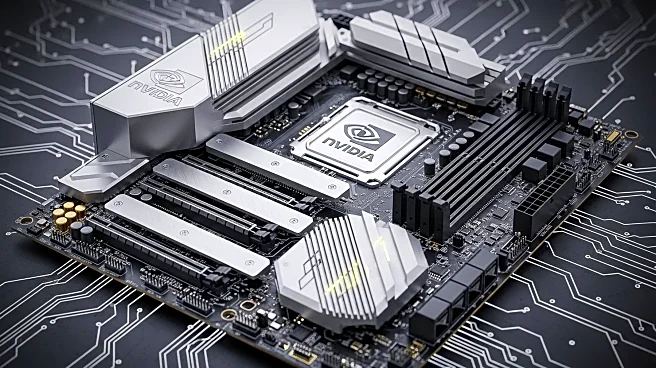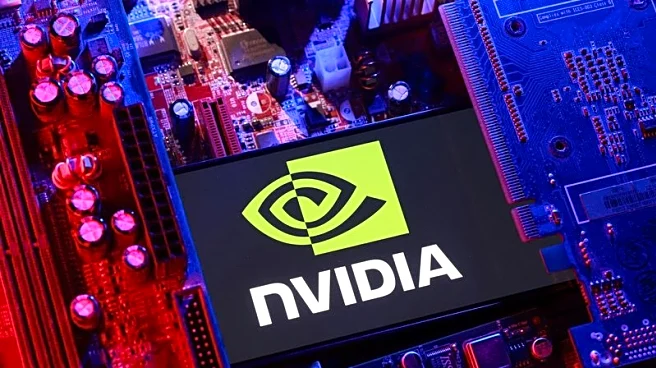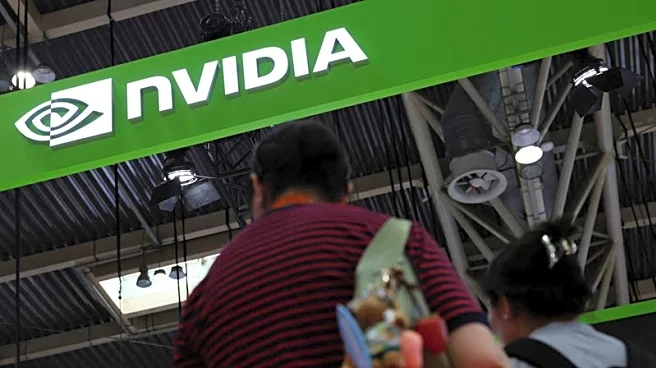What's Happening?
Intel has announced a $5 billion investment from Nvidia, making Nvidia one of Intel's largest shareholders with a 4% stake. This partnership aims to jointly develop PC and data center chips, potentially boosting Intel's capabilities in artificial intelligence and manufacturing. Analysts suggest that this collaboration could ease U.S. scrutiny on foreign rivals like Taiwan's TSMC, which currently dominates AI chip production for U.S. companies. The deal is seen as a strategic move to revitalize Intel's manufacturing technology, which has struggled in recent years. The U.S. government is keen on Intel regaining its status as a leading semiconductor manufacturer, viewing it as a matter of national security.
Why It's Important?
The partnership between Intel and Nvidia is significant for the U.S. semiconductor industry, as it could reduce reliance on foreign chipmakers like TSMC and Samsung Electronics. This move aligns with U.S. efforts to bolster domestic manufacturing capabilities, potentially reducing the pressure on Asian companies to produce chips in the U.S. The deal could also impact competitors like AMD, as Nvidia's collaboration with Intel might shift market dynamics. For Intel, this partnership offers a chance to regain competitiveness and secure its future in chip manufacturing, which is crucial for national security and technological advancement.
What's Next?
Intel's partnership with Nvidia may lead to further developments in chip manufacturing technology, potentially involving future manufacturing deals. This could challenge TSMC's current role in producing Nvidia's flagship processors. The U.S. government may continue to support Intel's efforts to expand its manufacturing capabilities, possibly influencing policy decisions related to semiconductor production. The industry will be closely watching how Intel's foundry business evolves and whether it can attract external customers to sustain its operations.
Beyond the Headlines
The Intel-Nvidia partnership highlights the geopolitical dimensions of semiconductor manufacturing, as the U.S. seeks to reduce dependency on foreign suppliers. This move could trigger shifts in global supply chains and influence international trade relations. The collaboration also underscores the importance of technological innovation in maintaining competitive advantage, as companies like Intel strive to keep pace with industry leaders like TSMC.











